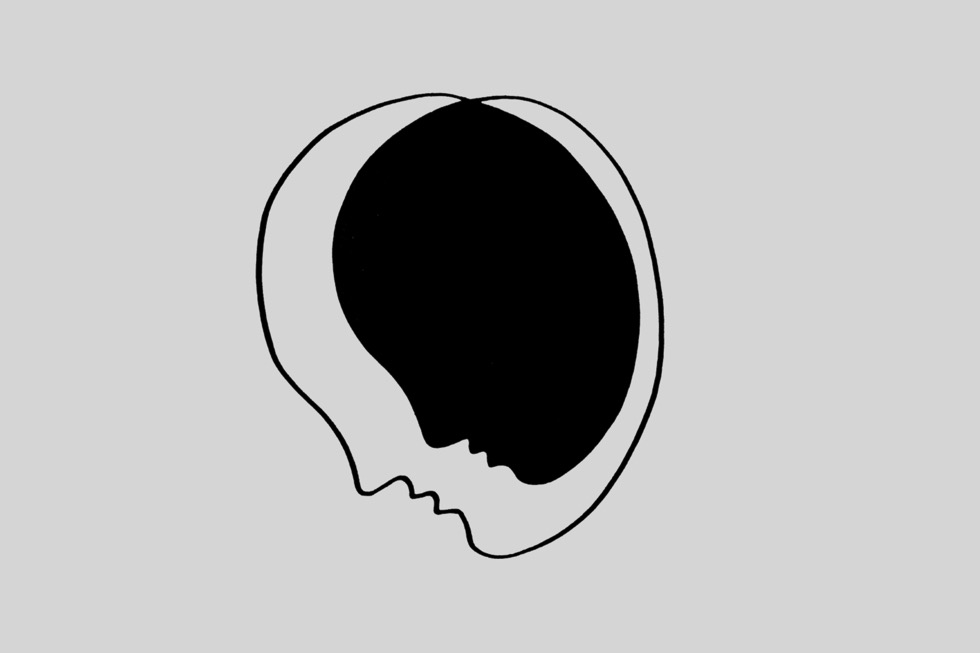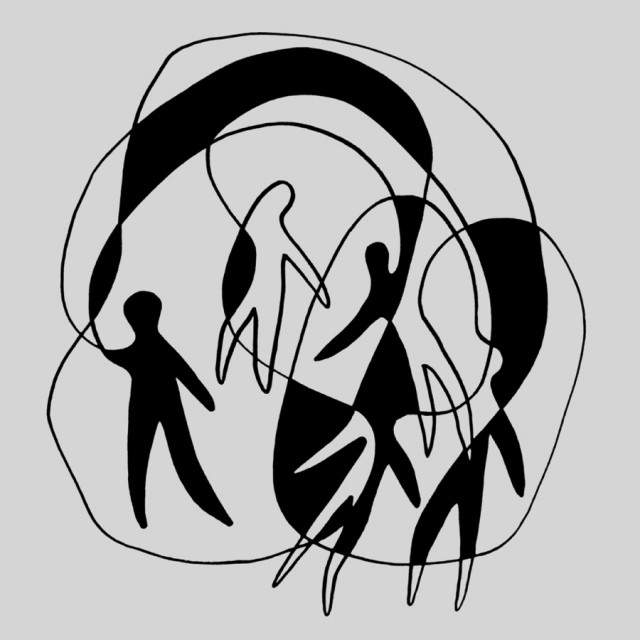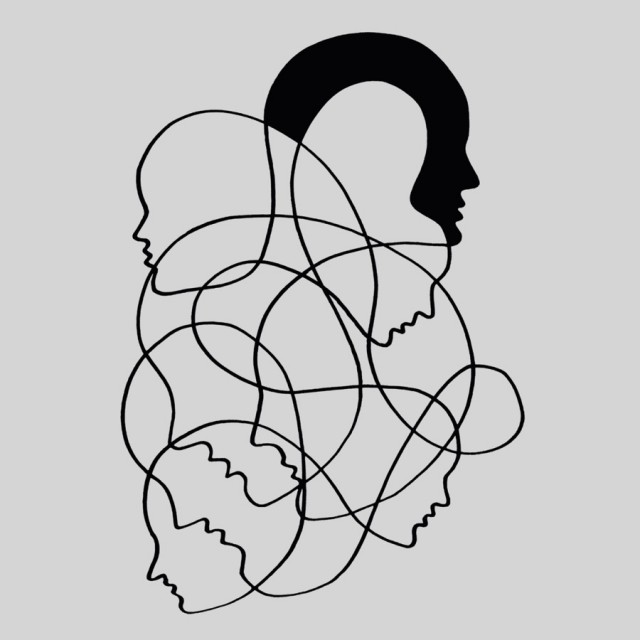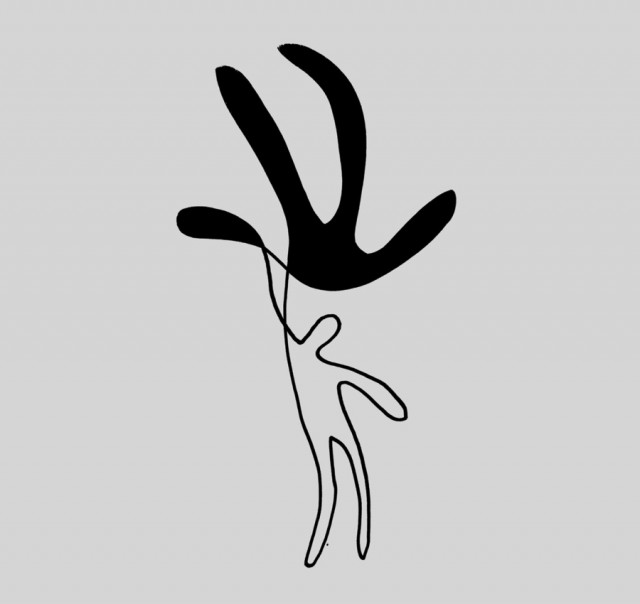The Alchemy Between Us: How Artists Really Feel About Engagement

Do artists need other people to be artists? Artist Laurence Payot invited peers, including philosopher Yiota Vassilopoulou, to discuss audiences, echo-chambers, “engagement”, and a host of current issues at Tate Exchange, Liverpool, recently. The result? A candid conversation about why they make art, and for whom…
“We do not have to transform spectators into actors, and ignoramuses into scholars. Every spectator is already an actor in her story; every actor, every man of action, is the spectator of the same story.” — philosopher Jacques Rancière, The Emancipated Spectator.
Rancière challenges the dichotomy so often replicated in our ordinary thoughts, between people as passive audiences of art — considered as the finished product of the artistic process — and artists, who are the authors, the active agents, that give artworks their life and form. But for both artists and audiences, is there in fact an active exchange, and if so what is traded in that exchange?
If Rancière’s words alone could transform this common perception or practice, at what cost would this be? Would the emancipation of the spectator challenge the freedom of the artist? Would the artist (as author or authority), when assuming the role of the spectator, member of a community or activist, be in consonance or dissonance with those roles? What challenges does this present in terms of the value of their art? Do people really care to be active participants and do artists really want to share ownership of their works?
With a focus on practice, a discussion at Tate Liverpool, hosted by artist Laurence Payot during her time in the gallery for Tate Exchange (December 2016), engaged artists interested in communication, collaboration and interaction with people. Acknowledging that art can be socially engaged without necessarily being participatory, artists working across a range of genres, media and spaces were prompted to reflect on their exchanges with people and the ways this affects their approaches to making art and being artists.
The diversity of practices and perspectives became immediately evident through their different understandings of “people” in their work. Of course, people have traditionally been the subject matter of artworks, whether as objects for observation or sources of inspiration. Considered as audiences, people are the recipients of a message — be it personal, political, or cultural — communicated by the artist through the work. In contemporary practice, audiences can also share in the experience of the artwork, the expression of the artist, or become engaged in a new way of seeing, thinking or feeling that was not previously available to them. The artist’s intention might be to create memories or experiences of beauty and pleasure, perplexity, comfort or discomfort; to challenge given norms and stereotypes, or to make a change in the world by changing people. Considered as the public, people are the anonymous crowd, the critic (at times the enemy but also the friend), the like-minded artist, the professional, or the member of a community in which the artist may also belong, or particularly aiming at engaging.

And yet people, more clearly in the case of participatory art but also more generally, are often considered as participants or contributors; the element necessary for the delivery or completion a work of art. And in this sense, the artist too, is one of the people. But is the artist’s participation in their own project and that of other participants on equal footing?
“I need people to create events, moments that I would personally want to be within. Without them the work can’t be finished, the utopian vision would remain a concept and not come to reality. In a way I am the main viewer of my work, people become the performers who surprise me” — Laurence Payot.
Many artists think of their relationship with people as an exchange, but often with the provision that the artist creates something with a plan in mind and has the power to control this exchange. Some artists consider this exchange more open, yet more purposeful, much like a knowledge exchange between professionals who can contribute expertise, technical knowledge and ideas to shape or improve the work. Others think of it as collaborative research, where both artists and members of the public explore a given subject or question together.
“I am trying to rethink our social and ecological connections and exchange and quite simply, the reason I work with other people is because this is something I cannot do on my own as an artist” — artist Ailie Rutherford.
In this sense, people may also be thought of as giving something back to the artist, in return for being engaged, inspired, challenged.
“I like seeing people getting something from the art I produce. I feel satisfaction and this helps me further understand why I do what I do. My actions provoke reactions which in turn inform the work” — artist Claire Weetman.
People can act as viewers, listeners or audience of a final artwork, and still influence the way the work is created, helping the artist to provoke a sentiment, a reaction, a feeling – to “communicate” something. In this way, the viewer becomes a sort of decoder of the work, like a computer decrypting words and images on a hard drive (an analogy by artist/writer Nathan Jones). The viewer can open an artwork thanks to a shared knowledge and understanding of forms, either intrinsic to human experience or anchored within a given time and society. Even for studio-based artists, it seems that the exchange with people is of primary importance.

“I don’t want to be a hermit painter, or my relationship with people to be mediated by the gallery, the curator, the dealer. I want to say it’s all about paint, that I don’t care about the viewer, but actually, I do think about the viewer… I need an audience… I need a viewer… The viewer is kind of… the end. The viewer gives me focus. I don’t know in fact if I would paint without a viewer” — artist Hamish McLain.
Artists seem to particularly value responses from people that are unexpected, surprising or emotionally engaged in ways the artist could not have foreseen: different spaces and publics are more rewarding, especially if art is not done in the studio but is a happening, an interactive process.
People’s opinions and participation can be gratifying but they can also be tantalising, demoralising or disruptive. Several artists remarked that audiences often don’t want to get involved, are indifferent or even dismissive; ‘my 5-year old can do this’, much more than a cliché, is a lived reality for the contemporary artist. Artists face thus the challenge to make people understand, engage, appreciate the work; they can feel exposed and vulnerable, having to deal with the fear of failure. And in this effort, galleries and art institutions more generally, are not always an ally. At times, audiences find these spaces alienating and the mediation of curators and interpreters confusing or unwelcomed, negatively affecting the relationship between artists and people. Undoubtedly, many contemporary institutions do try to make their spaces open to all and adopt diverse strategies combining public engagement with education, which is a very hopeful approach, especially if it becomes more systematic and widespread.
“Most artists don’t want to work with people. They engage in participation, facilitation and educational activities in order to fund their other practice, which is their proper art” — artist Flis Mitchell.
But even in cases where audiences are keen to be involved, artists may find it a struggle to negotiate power over decisions, authorship, ownership; by taking part in the work, people might gain “cultural ownership”, which could make the artist question their role: “what is my role if this is not my work to make, my story to tell?”. In some cases, artistic freedom may be compromised and the quality of the work negatively affected, when modified in order for people to actively contribute to it, so artists need to establish frameworks, systems, rules if they wish to keep control over their goal or vision. In the case of social artworks passed on to a community, when does the work cease to be a work of art and start merging with the everyday? And does it matter? Some artists would consider this a success.
In today’s ideological climate, in which the market values of late capitalism are often promoted under the utilitarian pretenses of mass democracy, the pressure on artists is increasing to create work with a pragmatic dimension as well as social relevance. In order for artists to secure funding (from the Arts Council, for example), they need to make explicit how they will engage audiences; the nature and number of people who will benefit from their work, and in what ways. With public funding, the onus is on the artist to demonstrate the relevance of their contribution and the value of their practice for society in terms of economic or cultural impact. And so artists need people in order to make ends meet, to further their careers, to be able to practice art. People are then the market, the patients, the ignoramuses; and the artist becomes a dealer, a healer, a social worker, a teacher. But is the artist then an artist, and can what they do be defined as art? One practitioner puts it this way:

“I may be a feminist, a woman, a social worker, and activist, but when I am doing art I am doing something different. I have a different frame of mind. If everything I did were art, it would equally be that nothing was art, as there would be no way to distinguish between them” — Mitchell.
For some artists, it is crucial to reach audiences, to open the echo-chambers that lead to political divisions. The question of engagement and widening the usual circles of audiences is not about ticking commissioners’ or funders’ boxes, it is about trying to make the world a better place. It is a generous passion, a wakeup call for society. No matter if these artists only reach a few unexpected people or thousands of anonymous visitors, as long as they can plant seeds for change, visions of beauty, aspirations or empathy, the value of their art is worth far more than capitalist gold.
“I feel a total sense of emergency; we have to find new ways to live with each other and think about new systems for living” — Rutherford.
And yet, even if artists were to activate changes in the world, to demonstrate that they have done or will do so, is a different story altogether. Documentation and archiving is sometimes integral to an artistic project, or a work of art itself, but often it is just a means of justification to the taxpaying public, demanded by funding bodies. In their attempt to account for the impact of their work, artists are asked to also become social scientists, historians, analysts… so many things, that is, other than being artists: “Why isn’t doing art enough?”
Artists suggested that a way to overcome these challenges is to adopt a grass roots approach, to establish close links with members of the community, which help create a space where they can feel safe. To be more effective in changing the way others think, artists felt that they need to change the way they think themselves. For one thing, as an artist remarked, their art is made for an audience and did not consider modifying it in order to accommodate this audience a sacrifice. “What I want to make”, another artist remarked, “is not a transcendental truth; I am communicating things that need to be understood. If they are not, it may be that I should improve my work.”
Initiatives like Tate Exchange, where this event took place, and community discussions informed by philosophical inquiry, as was the case here, were considered a decisive step in the right direction, responding directly to the increasing need to make the time and space where people and artists alike can discuss the work they are looking at or being part of and reflect on it as well as life.
Yiota Vassilopoulou is Senior Lecturer in Philosophy at the University of Liverpool.
This text is based on a conversation that took place at Tate Liverpool on 14 December 2016, facilitated by Laurence Payot and Yiota Vassilopoulou. Artists with a broad range of practices (from studio-based to participatory and collaborative) were invited, including Martin Hamblen, Hamish McLain, Ulysses Alvarez, Flis Mitchell, Becky Peach, Ailie Rutherford, Emily Speed and Claire Weetman, to share their views on how people influence the creation of their work
See more on the project on Payot’s website, under The Alchemy Between Us
Images all courtesy Laurence Payot, pen on paper, 2017. From top: ”I feel a sort of empathy with the artist. The artwork brings us together.” / “As I walked around it, the piece was constantly changing. I became more aware of my own movements, and the fact that my body too is constantly changing.” / “Is it that the artists can somehow distill the essence of a particular time?” / “Scale, material, time, behaving in a different way”





